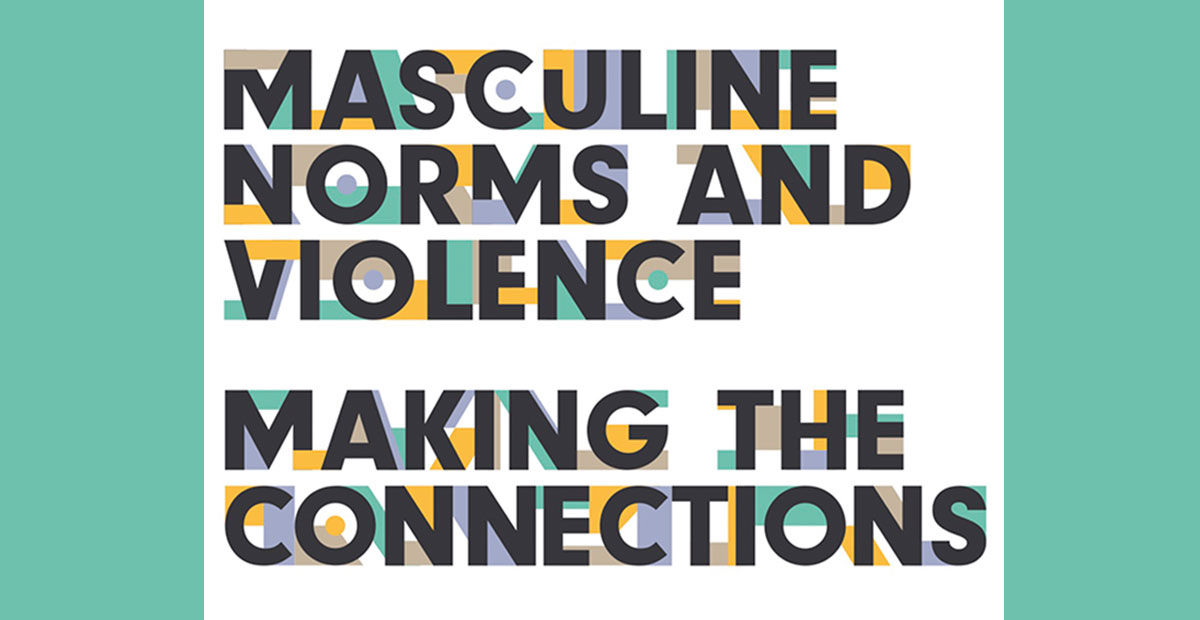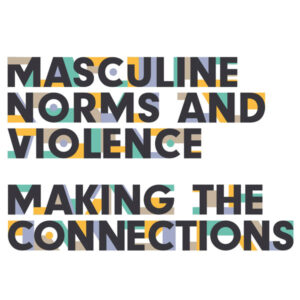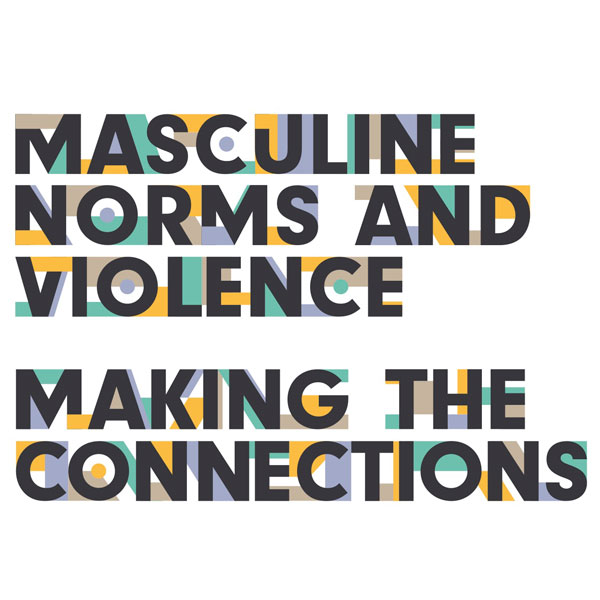
Equimundo and the Oak Foundation launched Masculine Norms and Violence: Making the Connections, a new report examining the links between harmful masculine norms and eight forms of violent behavior, on April 24, 2018.
The unveiling of the report – which combines a literature review with program evidence and input from violence-prevention experts – coincided with Equimundo’s Future of Manhood event celebrating 20 years of working to engage men and boys in advancing gender justice.
Key Findings
The report finds that male identity and masculine norms are undeniably linked with violence, with men and boys disproportionately likely both to perpetrate most forms of violence and to die by homicide and suicide. Boys and men are often raised, socialized, and encouraged to be violent, depending on their social surroundings and life conditions.
Why is it that men and boys are disproportionately likely to perpetrate so many forms of violence, as well as to suffer certain forms of violence? To add a new dimension to the complex answer, this report explores “masculine norms” – the messages, stereotypes, and social instructions related to manhood – as crucial factors driving men’s violence.
The report outlines five processes through which masculine norms shape the likelihood of men and boys experiencing or perpetrating violence: (1) achieving socially recognized manhood, (2) policing masculine performance, (3) “gendering” the heart, (4) dividing spaces and cultures by gender, and (5) reinforcing patriarchal power.
It examines eight forms of violent behavior in relation to masculine norms:
- Intimate partner violence: Social norms about manhood often teach men and boys that they must exhibit inequitable power and control over their intimate partners, including by the use of violence.
- Physical violence against children (by parents or caregivers): Violence within the childhood home is a primary means by which children see, learn, and internalize the hierarchical power imbalances between and within genders. It can also be a mechanism by which parents control the gender performance of sons and daughters.
- Child sexual abuse and exploitation: Gender norms that associate manhood with heterosexual prowess and with access to, and control over, the bodies of women, girls, and boys may contribute to male perpetration of child sexual abuse and exploitation.
- Bullying: Masculinities are often at the root of men’s perpetration of bullying. Research suggests that bullying behaviors often share common root causes: the perpetrator’s desire to demonstrate power and control over the victim and the use of violence or intimidation to enforce gender conformity.
- Homicide and other violent crime: Crime statistics consistently show that men disproportionately perpetrate violent crime and often target male victims, with research pointing to an entrenched cycle of violence linked with masculine gender identity. Men and boys often use crime in various ways to demonstrate or prove their achievement of a certain form of masculinity.
- Non-partner sexual violence: Jokes, television shows, laws, commercials, and many other cultural forces combine to, very often, create a reality, which some call “rape culture,” where men’s sexual violence against women seems a normal, even inevitable part of life.
- Suicide: Globally, men are almost twice as likely to die by suicide as women are. Societies that tell men to repress their emotions contribute to a crisis of connection among men, which may play a small role in driving this phenomenon. The act of suicide may also be constructed as a masculine or masculinized action, which may explain why men are more likely to use more immediately fatal means such as firearms when attempting suicide.
- Conflict and war: In addition to the enormous loss of life – of all genders – that comes with political conflict and its long aftermath, research also demonstrates how the military and militarized culture at large are rooted in a gender hierarchy in which the masculine is valorized at the expense of the feminine.
These headlines represent only a very small glimpse at the connections investigated in the full report, which urges researchers, programmers, policymakers, donors, and others responding to and preventing violence around the world to more effectively incorporate an understanding of patriarchal power and harmful masculine norms into their work. Masculine Norms and Violence: Making the Connections provides key recommendations for improved future practices, drawing upon the insights in the report.
Read the full report here.

